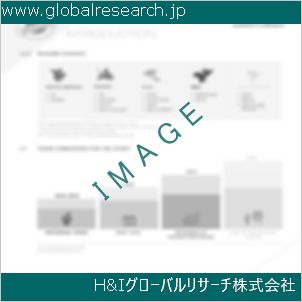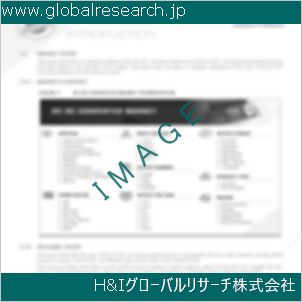Table of Contents
1 Industry Overview of Sulfur
1.1 Definition and Specifications of Sulfur
1.1.1 Definition of Sulfur
1.1.2 Specifications of Sulfur
1.2 Classification of Sulfur
1.3 Applications of Sulfur
1.3.1 Nuclear Application
1.3.2 Non-Nuclear Application
1.4 Industry Chain Structure of Sulfur
1.5 Industry Overview and Major Regions Status of Sulfur
1.5.1 Industry Overview of Sulfur
1.5.2 Global Major Regions Status of Sulfur
1.6 Industry Policy Analysis of Sulfur
1.7 Industry News Analysis of Sulfur
2 Manufacturing Cost Structure Analysis of Sulfur
2.1 Raw Material Suppliers and Price Analysis of Sulfur
2.2 Equipment Suppliers and Price Analysis of Sulfur
2.3 Labor Cost Analysis of Sulfur
2.4 Other Costs Analysis of Sulfur
2.5 Manufacturing Cost Structure Analysis of Sulfur
2.6 Manufacturing Process Analysis of Sulfur
3 Technical Data and Manufacturing Plants Analysis of Sulfur
3.1 Capacity and Commercial Production Date of Global Sulfur Major Manufacturers in 2023
3.2 Manufacturing Plants Distribution of Global Sulfur Major Manufacturers in 2023
3.3 R&D Status and Technology Source of Global Sulfur Major Manufacturers in 2023
3.4 Raw Materials Sources Analysis of Global Sulfur Major Manufacturers in 2023
4 Capacity, Production and Revenue Analysis of Sulfur by Regions, Types and Manufacturers
4.1 Global Capacity, Production and Revenue of Sulfur by Regions 2019-2024
4.2 Global and Major Regions Capacity, Production, Revenue and Growth Rate of Sulfur 2019-2024
4.3 Global Capacity, Production and Revenue of Sulfur by Types 2019-2024
4.4 Global Capacity, Production and Revenue of Sulfur by Manufacturers 2019-2024
5 Price, Cost, Gross and Gross Margin Analysis of Sulfur by Regions, Types and Manufacturers
5.1 Price, Cost, Gross and Gross Margin Analysis of Sulfur by Regions 2019-2024
5.2 Price, Cost, Gross and Gross Margin Analysis of Sulfur by Types 2019-2024
5.3 Price, Cost, Gross and Gross Margin Analysis of Sulfur by Manufacturers 2019-2024
6 Consumption Volume, Consumption Value and Sale Price Analysis of Sulfur by Regions, Types and Applications
6.1 Global Consumption Volume and Consumption Value of Sulfur by Regions 2019-2024
6.2 Global and Major Regions Consumption Volume, Consumption Value and Growth Rate of Sulfur 2019-2024
6.3 Global Consumption Volume and Consumption Value of Sulfur by Types 2019-2024
6.4 Global Consumption Volume and Consumption Value of Sulfur by Applications 2019-2024
6.5 Sale Price of Sulfur by Regions 2019-2024
6.6 Sale Price of Sulfur by Types 2019-2024
6.7 Sale Price of Sulfur by Applications 2019-2024
6.8 Market Share Analysis of Sulfur by Different Sale Price Levels
7 Supply, Import, Export and Consumption Analysis of Sulfur
7.1 Supply, Consumption and Gap of Sulfur 2019-2024
7.2 Global Capacity, Production, Price, Cost, Revenue, Supply, Import, Export and Consumption of Sulfur 2019-2024
7.3 USA Capacity, Production, Price, Cost, Revenue, Supply, Import, Export and Consumption of Sulfur 2019-2024
7.4 EU Capacity, Production, Price, Cost, Revenue, Supply, Import, Export and Consumption of Sulfur 2019-2024
7.5 China Capacity, Production, Price, Cost, Revenue, Supply, Import, Export and Consumption of Sulfur 2019-2024
7.6 Japan Capacity, Production, Price, Cost, Revenue, Supply, Import, Export and Consumption of Sulfur 2019-2024
8 Major Manufacturers Analysis of Sulfur
8.1 Manufacturer One
8.1.1 Company Profile
8.1.2 Product Picture and Specifications
8.1.2.1 Type I
8.1.2.2 Type II
8.1.2.3 Type III
8.1.3 Capacity, Production, Price, Cost, Gross and Revenue
8.1.4 Contact Information
8.2 Manufacturer Two
8.2.1 Company Profile
8.2.2 Product Picture and Specifications
8.2.2.1 Type I
8.2.2.2 Type II
8.2.2.3 Type III
8.2.3 Capacity, Production, Price, Cost, Gross and Revenue
8.2.4 Contact Information
8.3 Manufacturer Three
8.3.1 Company Profile
8.3.2 Product Picture and Specifications
8.3.2.1 Type I
8.3.2.2 Type II
8.3.2.3 Type III
8.3.3 Capacity, Production, Price, Cost, Gross and Revenue
8.3.4 Contact Information
8.4 Manufacturer Four
8.4.1 Company Profile
8.4.2 Product Picture and Specifications
8.4.2.1 Type I
8.4.2.2 Type II
8.4.2.3 Type III
8.4.3 Capacity, Production, Price, Cost, Gross and Revenue
8.4.4 Contact Information
8.5 Manufacturer Five
8.5.1 Company Profile
8.5.2 Product Picture and Specifications
8.5.2.1 Type I
8.5.2.2 Type II
8.5.2.3 Type III
8.5.3 Capacity, Production, Price, Cost, Gross and Revenue
8.5.4 Contact Information
…
9 Marketing Trader or Distributor Analysis of Sulfur
9.1 Marketing Channels Status of Sulfur
9.2 Traders or Distributors with Contact Information of Sulfur by Regions
9.3 Ex-work Price, Channel Price and End Buyer Price Analysis of Sulfur
9.4 Regional Import, Export and Trade Analysis of Sulfur
10 Industry Chain Analysis of Sulfur
10.1 Upstream Major Raw Materials Suppliers Analysis of Sulfur
10.1.1 Major Raw Materials Suppliers with Contact Information Analysis of Sulfur
10.1.2 Major Raw Materials Suppliers with Supply Volume Analysis of Sulfur by Regions
10.2 Upstream Major Equipment Suppliers Analysis of Sulfur
10.2.1 Major Equipment Suppliers with Contact Information Analysis of Sulfur
10.2.2 Major Equipment Suppliers with Product Pictures Analysis of Sulfur by Regions
10.3 Downstream Major Consumers Analysis of Sulfur
10.3.1 Major Consumers with Contact Information Analysis of Sulfur
10.3.2 Major Consumers with Consumption Volume Analysis of Sulfur by Regions
10.4 Supply Chain Relationship Analysis of Sulfur
11 Development Trend of Analysis of Sulfur
11.1 Capacity, Production and Revenue Forecast of Sulfur by Regions and Types
11.1.1 Global Capacity, Production and Revenue of Sulfur by Regions 2024-2029
11.1.2 Global and Major Regions Capacity, Production, Revenue and Growth Rate of Sulfur 2024-2029
11.1.3 Global Capacity, Production and Revenue of Sulfur by Types 2024-2029
11.2 Consumption Volume and Consumption Value Forecast of Sulfur by Regions, Types and Applications
11.2.1 Global Consumption Volume and Consumption Value of Sulfur by Regions 2024-2029
11.2.2 Global and Major Regions Consumption Volume, Consumption Value and Growth Rate of Sulfur 2024-2029
11.2.3 Global Consumption Volume and Consumption Value of Sulfur by Types 2024-2029
11.2.4 Global Consumption Volume and Consumption Value of Sulfur by Applications 2024-2029
11.3 Supply, Import, Export and Consumption Forecast of Sulfur
11.3.1 Supply, Consumption and Gap of Sulfur 2024-2029
11.3.2 Global Capacity, Production, Price, Cost, Revenue, Supply, Import, Export and Consumption of Sulfur 2024-2029
11.3.3 USA Capacity, Production, Price, Cost, Revenue, Supply, Import, Export and Consumption of Sulfur 2024-2029
11.3.4 EU Capacity, Production, Price, Cost, Revenue, Supply, Import, Export and Consumption of Sulfur 2024-2029
11.3.5 China Capacity, Production, Price, Cost, Revenue, Supply, Import, Export and Consumption of Sulfur 2024-2029
11.3.6 Japan Capacity, Production, Price, Cost, Revenue, Supply, Import, Export and Consumption of Sulfur 2024-2029
12 New Project Investment Feasibility Analysis of Sulfur
12.1 New Project SWOT Analysis of Sulfur
12.2 New Project Investment Feasibility Analysis of Sulfur
13 Conclusion of the Global Sulfur (CAS 7704-34-9) Industry 2024 Market Research Report
| ※参考情報 硫黄(Sulfur)は、周期表の16族に属する非金属元素で、化学記号はS、原子番号は16です。この元素は、自然界では主に鉱石や鉱物、さらには火山活動によって生成されることが多いです。硫黄は、固体の状態で存在し、黄色の結晶性物質として知られています。常温常圧において非常に安定な物質であり、生物にとっても不可欠な元素の一つです。 硫黄の物理的性質としては、常温では黄色い固体であり、刺激臭があるという特徴があります。融点は約115.2℃、沸点は約444.6℃であり、これにより硫黄は高温耐性を持つ材料としても重要です。また、硫黄は絶縁体であり、電気伝導性は持ちません。このため、電気的な用途に使用することは少ないものの、化学的特性の豊かさが広範な応用を可能にします。 硫黄には、いくつかの同素体(同じ元素で異なる構造を持つ物質)があります。最も一般的なのは、S8というリング状の分子構造を持つ形態です。これは、8つの硫黄原子が環状に結合したもので、安定した固体硫黄を形成します。また、温度や圧力によって他の結晶構造が形成されることもあります。これらの同素体は、硫黄の特性や用途に影響を与えます。 硫黄の用途は非常に多岐にわたります。最も一般的な用途の一つは、化学肥料の製造です。硫黄は植物に必要な栄養素の一つであり、特に作物の成長において重要な役割を果たします。硫黄を使用した肥料は、作物の健康を保つために欠かせないものとなっています。また、硫黄は塩類や酸の製造、特に硫酸の製造に主に利用されます。硫酸は、化学工業や製薬、石油精製業などの様々な分野で需給が高く、硫黄の需要を大きく押し上げています。 さらに、硫黄の医療応用も存在します。いくつかの硫黄化合物は、抗菌や抗炎症作用を持っており、皮膚病や感染症の治療に使用されることがあります。たとえば、硫黄含有クリームや洗剤はにきびや皮膚炎の治療に用いられることがあります。このように、硫黄の特性を活かした医療応用は、皮膚科治療の一環として重要な位置を占めています。 硫黄に関連する技術的な進展も見られます。近年、持続可能な農業や環境保護の観点から、硫黄を用いた新しい肥料の開発が進められています。たとえば、硫黄を微細化した粒子状肥料や、肥料成分をコーティングした硫黄肥料などが登場しており、効率的に硫黄を供給することが可能となりました。これにより、硫黄の流通がより効率的に行われ、農業の生産性向上に寄与することが期待されています。 また、硫黄はエネルギー分野でも注目されています。特に、リチウムイオン電池の代替技術として、硫黄を使用した新しい電池の開発が進められています。リチウム-硫黄電池は、軽量で高エネルギー密度を持ち、将来的に電気自動車や再生可能エネルギー貯蔵システムに利用されることが期待されています。これにより、エネルギーキャパシティの向上と同時に、環境への負荷軽減にも貢献する可能性があります。 硫黄の化学的性質の多様性は、さまざまな化合物を生み出します。硫黄化合物は、例えば、硫化水素(H2S)や二酸化硫黄(SO2)、硫酸(H2SO4)、硫黄酸(HSO4−)などがあり、これらは環境や生物に対して異なる影響を持つことがあります。特に、二酸化硫黄は大気中で酸性雨の原因となり、環境問題としても注目されています。これに対処するための技術的な開発も進行中であり、硫黄を含む廃棄物の処理や再利用技術の向上が図られています。 最終的に、硫黄はその多様な特性と用途から、私たちの日常生活や産業活動の中で重要な役割を果たしています。化学、農業、エネルギーなど、異なる分野に対するその影響は大きく、持続可能な利用法の模索が今後の課題であると言えるでしょう。硫黄の新たな可能性を追求することで、よりよい未来を築くための基盤になると期待されています。 |
❖ 免責事項 ❖
http://www.globalresearch.jp/disclaimer












